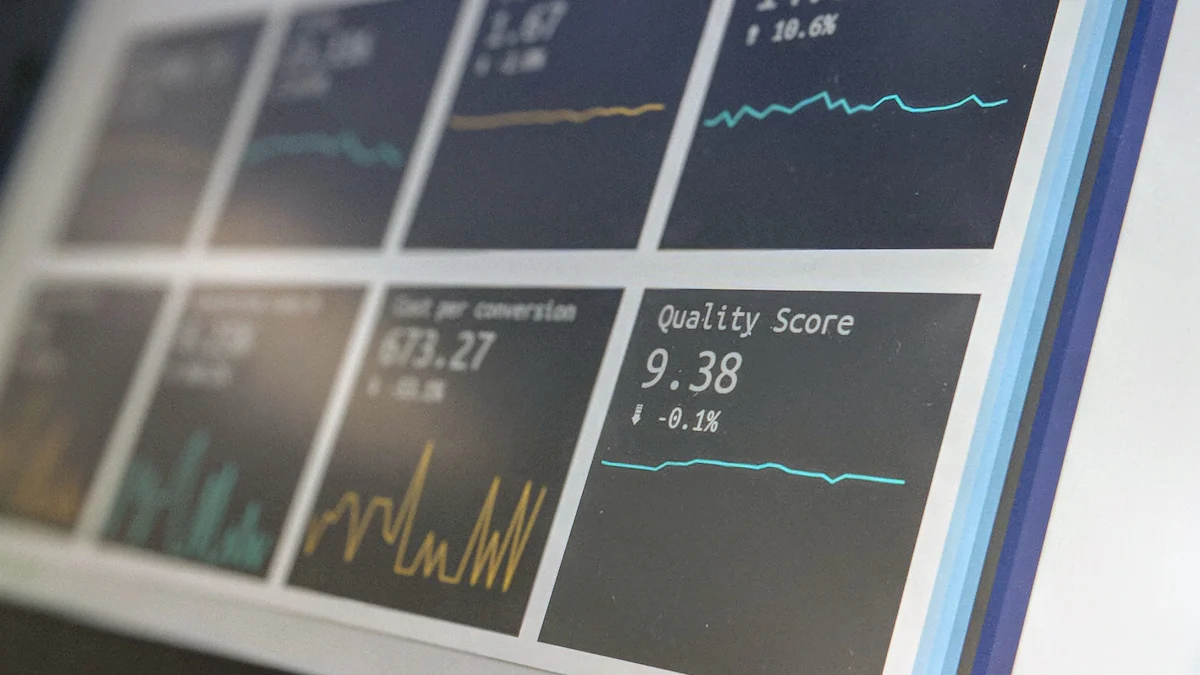
Ad Clickstream Analysis

Join StarRocks Community on Slack
Connect on SlackWhat is Clickstream Data?

Clickstream data refers to the digital breadcrumbs users leave as they navigate through websites. This data captures every action, such as clicks, page views, and time spent on each page. Businesses use clickstream data to understand user behavior and optimize their digital strategies.
Types of Clickstream Data
Clickstream data can be categorized into two main types:
-
Click-level Data: This type records individual clicks and interactions. It provides granular details about user actions.
-
Page-level Data: This type aggregates information at the page level. It includes metrics like page views, bounce rates, and session durations.
Sources of Clickstream Data
Clickstream data comes from various sources:
-
Websites: Most clickstream data originates from user interactions on websites.
-
Mobile Apps: Mobile applications also generate valuable clickstream data.
-
Third-party Tools: Tools like Google Analytics, Adobe Analytics, and Mixpanel collect and analyze clickstream data.
How Clickstream Data is Collected
Collecting clickstream data involves tracking user interactions across digital platforms. Businesses use different methods and tools to gather this data.
Tracking Methods
Several methods exist for tracking clickstream data:
-
JavaScript Tags: Websites embed JavaScript tags to capture user interactions.
-
Server Logs: Web servers log requests and responses, providing a record of user activity.
-
Cookies: Cookies track user behavior by storing small pieces of data on user devices.
Tools and Technologies
Various tools and technologies assist in collecting and analyzing clickstream data:
-
Google Analytics: Widely used for tracking website traffic and user behavior.
-
Adobe Analytics: Offers advanced features for in-depth analysis.
-
Microsoft Clarity: Provides insights into user interactions and behavior.
-
Mixpanel: Focuses on user engagement and retention metrics.
-
Kissmetrics: Specializes in tracking customer journeys and conversions.
The Process of Ad Clickstream Analysis
Data Collection
Setting Up Tracking
Setting up tracking forms the foundation of Ad Clickstream Analysis. Businesses need to implement tracking mechanisms to capture user interactions with ads. JavaScript tags embedded in web pages can record clicks, views, and other actions. Server logs provide a detailed account of user requests and responses. Cookies store small data pieces on user devices to track behavior over time. These methods ensure comprehensive data collection for accurate analysis.
Ensuring Data Accuracy
Ensuring data accuracy is crucial for reliable Ad Clickstream Analysis. Businesses must validate the collected data to eliminate errors. Cross-referencing data from multiple sources can help identify discrepancies. Regular audits of tracking systems ensure consistent data capture. Accurate data forms the backbone of insightful analysis and effective decision-making.
Data Cleaning and Preparation
Removing Noise
Removing noise from raw data enhances the quality of Ad Clickstream Analysis. Noise includes irrelevant or redundant information that can skew results. Filtering out bot traffic, duplicate entries, and irrelevant clicks refines the dataset. Clean data provides a clearer picture of genuine user behavior and ad performance.
Structuring Data
Structuring data involves organizing it into a usable format. Businesses categorize data based on various parameters such as user demographics, device types, and interaction times. Structured data enables efficient analysis and helps uncover patterns. Properly organized data facilitates deeper insights into ad effectiveness and user engagement.
Data Analysis Techniques
Descriptive Analysis
Descriptive analysis summarizes the collected data to provide an overview of user interactions. Metrics such as click-through rates (CTR), conversion rates, and bounce rates offer insights into ad performance. Visualizations like charts and graphs help illustrate trends and patterns. Descriptive analysis lays the groundwork for more advanced techniques in Ad Clickstream Analysis.
Predictive Analysis
Predictive analysis uses historical data to forecast future trends. Machine learning algorithms can predict user behavior based on past interactions. Businesses can anticipate which ads will perform well and allocate resources accordingly. Predictive analysis helps optimize marketing strategies and improve ROI.
Prescriptive Analysis
Prescriptive analysis goes a step further by recommending specific actions. This technique suggests changes to ad campaigns based on the analysis. For example, if certain ads perform poorly, prescriptive analysis might recommend adjustments to targeting or content. Implementing these recommendations can enhance ad effectiveness and user engagement.
Benefits of Ad Clickstream Analysis

Improved Ad Targeting
Understanding User Behavior
Ad Clickstream Analysis provides a detailed understanding of user behavior. Businesses can track the sequence of actions taken by users after interacting with ads. This data reveals which ads capture attention and drive engagement. By analyzing clickstream data, businesses can identify patterns in user behavior. These patterns help in understanding what appeals to different segments of the audience.
Personalization of Ads
Personalization of ads becomes more effective with Ad Clickstream Analysis. Businesses can tailor ads based on individual user preferences and behaviors. Clickstream data shows which products or services interest specific users. This information allows for the creation of personalized ad content. Personalized ads lead to higher engagement and conversion rates.
Enhanced ROI
Measuring Ad Effectiveness
Measuring ad effectiveness becomes straightforward with Ad Clickstream Analysis. Businesses can track metrics such as click-through rates (CTR) and conversion rates. These metrics provide insights into how well ads perform. By comparing different ads, businesses can identify the most effective ones. This analysis helps in refining marketing strategies to focus on high-performing ads.
Optimizing Ad Spend
Optimizing ad spend is another significant benefit of Ad Clickstream Analysis. Businesses can allocate resources more efficiently by understanding which ads yield the best results. Clickstream data helps in identifying underperforming ads. By reallocating budget from low-performing to high-performing ads, businesses can maximize their return on investment (ROI). This optimization ensures that marketing budgets are used effectively.
Applications of Ad Clickstream Analysis
Real-World Examples
Case Study 1
E-commerce Business Transformation
An e-commerce business faced challenges in understanding user behavior and improving sales. The company implemented Ad Clickstream Analysis to gain insights into customer journeys. By analyzing clickstream data, the business identified key touchpoints where users dropped off. The company optimized these areas, resulting in a smoother user experience. Enhanced ad placements led to increased engagement and higher conversion rates. The business saw a significant improvement in sales and overall user satisfaction.
Case Study 2
Enhancing E-commerce Analytics
A digitally-enabled business aimed to refine its online product recommendations. The company used Ad Clickstream Analysis to understand user interactions with ads and products. Clickstream data revealed patterns in user behavior, helping the business tailor its marketing efforts. Improved product recommendations resulted from this analysis. The company experienced higher user engagement and better conversion rates. Ad Clickstream Analysis proved essential in optimizing marketing strategies and enhancing customer experiences.
Best Practices
Regular Monitoring
Regular monitoring of clickstream data ensures continuous improvement. Businesses should track user interactions with ads consistently. Regular analysis helps identify trends and patterns in user behavior. This proactive approach allows businesses to make timely adjustments to their marketing strategies. Continuous monitoring ensures that ad campaigns remain effective and relevant.
Continuous Optimization
Continuous optimization involves refining ad campaigns based on clickstream data insights. Businesses should use Ad Clickstream Analysis to identify underperforming ads. Adjustments to targeting, content, and placement can enhance ad effectiveness. Regular updates to ad strategies ensure that businesses stay ahead in the competitive digital landscape. Continuous optimization maximizes return on investment (ROI) and improves overall marketing performance.
Conclusion
Ad Clickstream Analysis holds immense importance for digital marketers. Analyzing clickstream data allows businesses to understand user behavior and optimize ad campaigns. Marketers can track user interactions and identify patterns that lead to successful outcomes. Implementing Ad Clickstream Analysis in marketing strategies can enhance ad targeting, tailor messaging, and improve ROI. For further reading, explore tools like Google Analytics, Adobe Analytics, and Mixpanel to leverage the full potential of clickstream data.



.jpg)